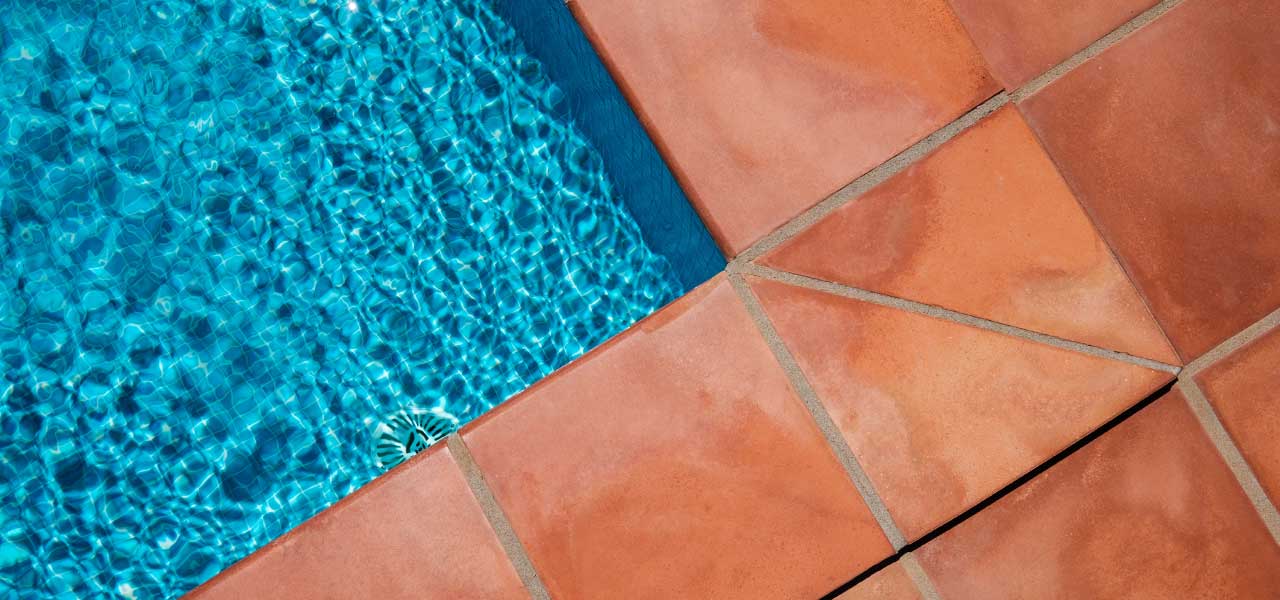FREE Standard Shipping On All Orders $100 or More!*

Pool Caulking: Repair or Replace
If your pool is new, you may see a foam strip installed when the deck was poured, separating the deck from the coping stones. This is your “perimeter expansion” joint. Expansion joints that run from the pool “out” are called lateral “expansion” joints.
Expansion joints are placed between the pool deck and the pool, or the home and patio, to allow for concrete slabs to expand during warm weather, without pushing on the pool wall and pool coping.
Not all pools need caulking, just in-ground pools with concrete decks and coping stones as shown above; only about 3 million pools in America, that's all.
What Does Caulking Do?

One of the strongest forces of nature is ice. When water freezes, it will expand with great force. Ice can break steel, concrete, rock and just about anything else that gets in its way. Secondly, during warm weather, concrete expands. In a battle of the vertical pool wall and the horizontal pool deck, both expanding, the pool wall loses every time.
- Prevents the expansion joint from filling up with dirt, grit and material that removes expansion space. If this happens during warm weather, the expanding pool deck will bump into the pool, cracking the pool wall and/or loosening coping stones and tile.
- Prevents water from filling the joint during winter, which seeps into the backside of the pool wall and beneath the coping stones. This can slowly loosen coping stones and tile all at once, or over many years.
And besides protecting your pool wall, tile and coping from cracking and falling off, new caulking also looks great in 3 colors: bone, buff, or gray.
How Much Caulk is Needed?
The number of tubes of caulk that you would need depends on the width of your joint, the length of your joint and the depth of the caulking. Get out the measuring tape, and measure the complete perimeter of the pool.
Depth is normally about 1/3 - 1/2 of the width measurement. The width of a pool expansion joint can vary from pool to pool, and from slab to slab, but most fall between 1/4" to 1" in width. Measure your joint width every 5 feet, all around the pool, to find an average width.

How to Apply Pool Caulk
- Start by removing old caulk by slicing it off close with a sharp razor knife.
- If debris or soils have filled the joint, use a pressure washer to remove.
- Insert foam backer rod in areas where it is missing, to an even depth.
- Load a cartridge, snip the tip, and squeeze into the joint.
- Move rapidly enough along so the joint fills up, but does not overflow.
Tips to DIY Pool Caulking
- Keep an old rag in your back pocket, and a large sheet of cardboard moving with you, to set down the caulking gun.
- Find a large quart-sized caulking gun in the paint section of any home or hardware store
- Keep the dogs and maybe the kids out of the backyard for the day.
- Pool caulk will adhere to damp surfaces, but be sure the joint is dry, and that bonding surfaces are free of grease and dirt.
- Apply pool caulk in temperatures of 50° to 80° for best results.
- Clean-up spills, drips or hands with mineral spirits or xylene before curing.
More Pool Caulking Tips
- Measure your joint width and depth carefully, to buy enough caulk.
- Keep short pieces of twine handy for any 'runners', voids where caulk runs through.
- Self-leveling caulk will seek the lowest level, or the lowest side of the pool or deck.
- Wear old clothes, move around the pool slowly with a large piece of cardboard.
- Taping the deck is not necessary and will not stick evenly, except on finely cut stone.
So please get out there and look over the pool caulk strip around the pool. You could get another winter out of it, or maybe there are some spots that need patching.